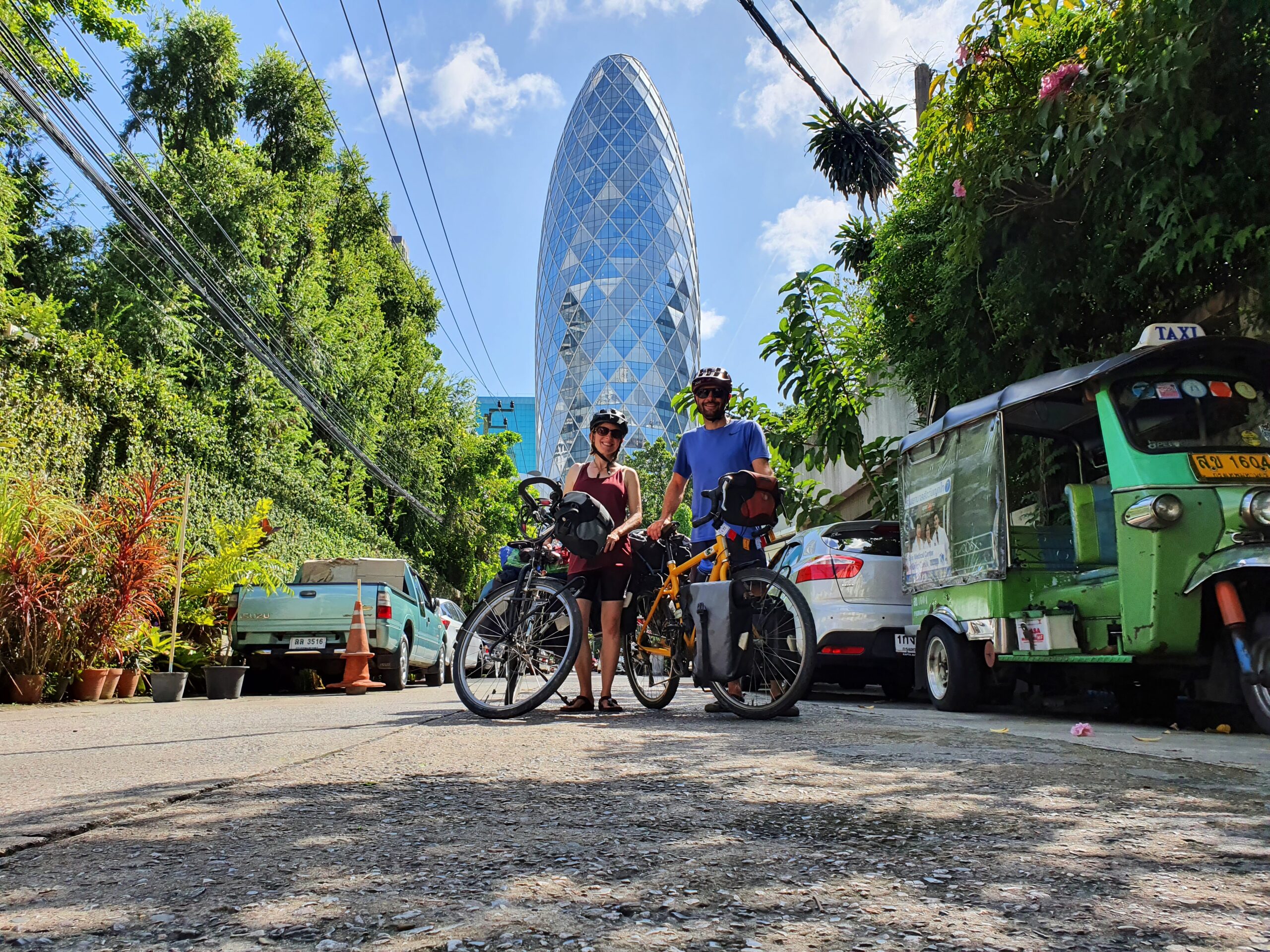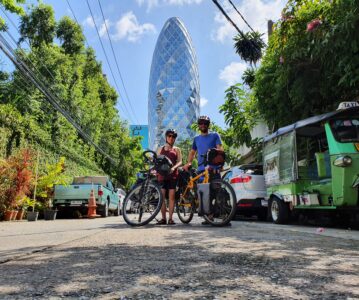This time the flying runs smoothly. For our conditions. At the airport in Kathmandu, the nice man from check in announces that we are 16 kg overweight. Since each kilo costs 15 $ extra, we first withdraw a little with our luggage mountain and consult what to do. Fill up hand luggage to the maximum. Put on shoes. Give away some things to the cleaning-didi. But that is not enough. We open the bike boxes and begin to saber out superfluous padding material. Finally, we open all the luggage and sort it out again – directly onto the secret beige behind a column and partly into the trash can. We are a bit surprised about the 16 kilograms. After all, in Kathmandu we handed over our tent, mats, sleeping bags, winter clothes and most of the cooking stuff to Kathy, who has already taken the huge package to New Zealand.
At some point the trouser bags are bulging, the hand luggage meets the 7 kg rules at first sight and we tackle the check in again. In disbelief, the check-in man announces that we now no longer have any excess baggage and hands us our boarding passes with a slightly suspicious air of justification. We are also very surprised and relieved, we pack the secret excess baggage into our completely overfilled carry-on bags behind the pillar and set off for a new country.
Four hours and a time difference later, Louie is lugging our huge bike boxes into the Bangkok metro. It’s night and tropically humid, and as we assemble the bikes at our destination station, we get a taste of an impressive monsoon rainfall.
Even though everything went smoothly – the day was long and so we soon sink into a deep, AC-cooled first sleep in Thailand in the pre-booked hostel.
The next day brings some new insights: Vegetarian food will be a challenge in this country, cloudless days here are mercilessly hot, and we’ll take a detour north for now. In a few days Louie can finally receive his new New Zealand passport at the embassy in Bangkok and I have to undergo an official health check, the results of which I have to attach to my visa application for New Zealand. Quite spontaneously we decide to drive the 80 kilometers to Ayutthaya and from there in a big arc around Bangkok to the south to the sea. There we want to set our bikes for a day and take the bus for a day trip back to Bangkok.
Much too late in the day we cycle off from our hostel into the sweltering heat. We are now again a bit closer to the equator and accordingly steeply the sun steals down on the earth. It takes hours until we leave the suburbs of Bangkok behind us and cycle on small side roads between coconut palms, rice fields and banana trees and pretty houses. “Sa-vat-ni-ka/krap,” we greet the locals sitting in the shade in the midday heat, dozing or chatting.
The short breaks are numerous: Something small to eat or drink, watching a huge monitor lizard disappearing into the bushes next to the road, admiring and identifying exotic plants, pippi breaks for Simone and and and. At 2 p.m. the sun hammers so brutally out of the cloudless sky that we admit defeat and take a long lunch break in front of a fan. Even sitting down, we feel the drops of sweat rolling down our backs. We shine like two oil sardines and wonder about the Thais who still wear jeans at over 35 °C and don’t seem sweaty at all. These first days of driving teach us a lot about this new country: By no means everyone here speaks some English, as we somehow assumed. Google Translate lets us down for the first time on our trip. It translates single words quite well. With simple sentences, however, the app quickly gets into a tailspin and so we feel quite speechless, or rather, the exciting dialogs with the locals are largely limited to theatrical pantomime, food pointing and broad smiles.
We manage just 44 dripping, altitude-less kilometers. This part of Thailand is flat and not a single hill breaks up the horizon line. It just reaches the next trees or houses and only the numerous bridges allow us short glimpses of the villages and river systems.
At a wide river we try to find a place to spend the night. We are in the middle of an extinct village somewhere in the middle of nowhere and it is hot. The clouds in the sky promise some rain… but as it will turn out, we hope in vain. The breeze is not too strong and there is no cooling in sight. The water is brown and opaque and who knows what kind of creatures are floating around in it.
Also we do not find food. On the main street a 7/11 with AC and its unbelievable lack of content attracts us: ridiculously packaged chips, microwave and cosmetic products, sugar juices and lemonades. The culinary highlight is the racks of instant noodle soups, which can be conveniently mixed with hot water right on the spot. Finally, we find the only restaurant in town and treat ourselves to an overpriced omlette soup.
But the real odyssey is yet to come: Today we want to spend the first night in the hammocks. The hammocks don’t really want to be comfortable, we don’t have a system yet how to mount the mosquito nets and I panic that I will sweat out all body fluids at the prevailing temperature and our baby will dry out. The hammock is too hot, our bodies are too hot, it is and remains windless and the night drags on forever. A night that makes it into the top 10 most uncomfortable nights in life.
Amazingly cheerful, we cover the remaining distance to Ayutthaya the next day. Ayutthaya is an ancient capital and countless Buddhist temple ruins bear witness to its former grandeur. The city is made for exploring by bike and here we easily find tasty “street food” and soon also a wonderful accommodation. It is still hot and again and again breaks in cooled stores or juice stores are necessary. I do some research: On average it takes two weeks until the body gets used to the tropical heat. Oh my!
The planned break day in Ayutthaya turns into two. I am plagued by hot flashes and headaches and stay in bed for the time being, while Louie explores the exciting town a bit more.
For the drive back to the height of Bangkok and to the sea we need another three days. The road network in Thailand is incredibly dense: Perfect tar or even concrete roads lead right into the smallest settlements. If you look at it on a map, it seems as if the area is completely paved over. In reality, however, there is a surprising amount of space for a surprising amount of green. Canals and rivers crisscross the landscape and often we drive through dense forests of coconut palms, banana trees and plants unknown to us. Rice, orchids and other ornamental plants are grown in the more open areas. In the smallest villages, small open kitchens can be found along the roadsides, where grilled chicken and fresh fish can be bought even at 7 o’clock in the morning. This is not exactly our idea of a morning meal, but for lack of an alternative we settle for a spicy, semi-vegetarian curry.
After a stop at a large and bizarre “Dragon Temple” we finally arrive in Samut Songkhram, where we put our bikes in a hostel and take the bus back to Bangkok to fulfill our office missions.
Translated with www.DeepL.com/Translator (free version)


